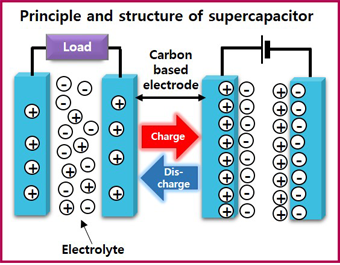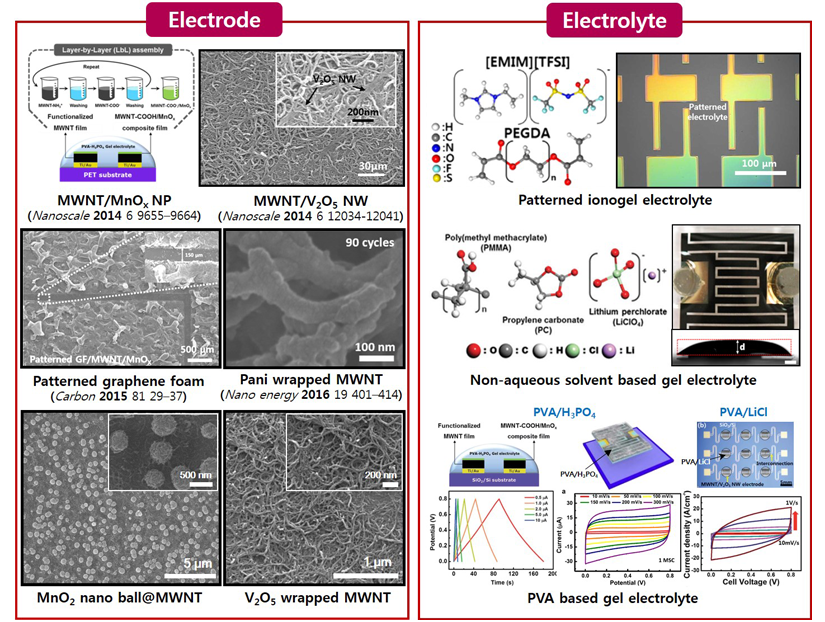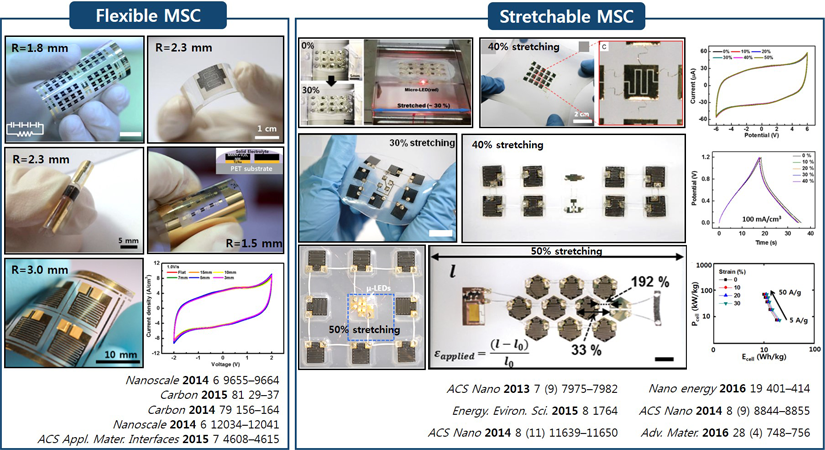
Supercapacitor, also known as electrochemical capacitor or
ultra-capacitor, is placed in between conventional dielectric capacitor
and battery in terms of energy density and power density.
Supercapacitors have many advantages over battery with longer
cyclic life of charge/discharge, faster charging, higher power density,
and simpler structure compared to batteries. These supercapacitors
store energy by accumulating electrostatic charges directly in the
interface between electrodes and electrolyte. With application of bias
voltage, the cations and anions are attracted to electrodes with
opposite polarity forming electronic bilayer inside the electrode pores.

Carbon-based materials such as carbon nanotubes (CNTs), activated carbon, graphene, and graphene foam which have
high conductivity and high surface area are commonly used as electrode materials. In order to enhance the electrochemical
performance, we additionally utilize the materials including conducting polymersand metal oxides which can induce redox
reactions.
Conventional supercapacitors utilized liquid electrolyte. However, liquid electrolyte easily leaks out from supercapacitors
when external strain such as stretching or bending was applied. This directly led to the degradation of performance.
Also, liquid-electrolyte limited the applications of supercapacitors because the electrolyte would decompose at high
voltage above 1V. To enhance the stability as well as the electrochemical performance, we conduct research on
solid-state electrolyte such as ionogel, non-aqueous solvent based gel, and polymer based gel electrolyte. In particular,
non-aqueous solvent based electrolyte extended the potential window.forming electronic bilayer inside the electrode pores.

According to the increasing interest towards body-attachable, portable and small electronic devices, the need for flexible
and stretchable energy storage device is rapidly increasing. It is important to design and fabricate the mechanically stable high
performance micro-supercapacitors under repeated deformations of bending and stretching. Therefore, we are conducting
research on flexible and stretchable supercapacitors as the integrated energy storage devices for body-attachable and/or
portable electronic devices.










